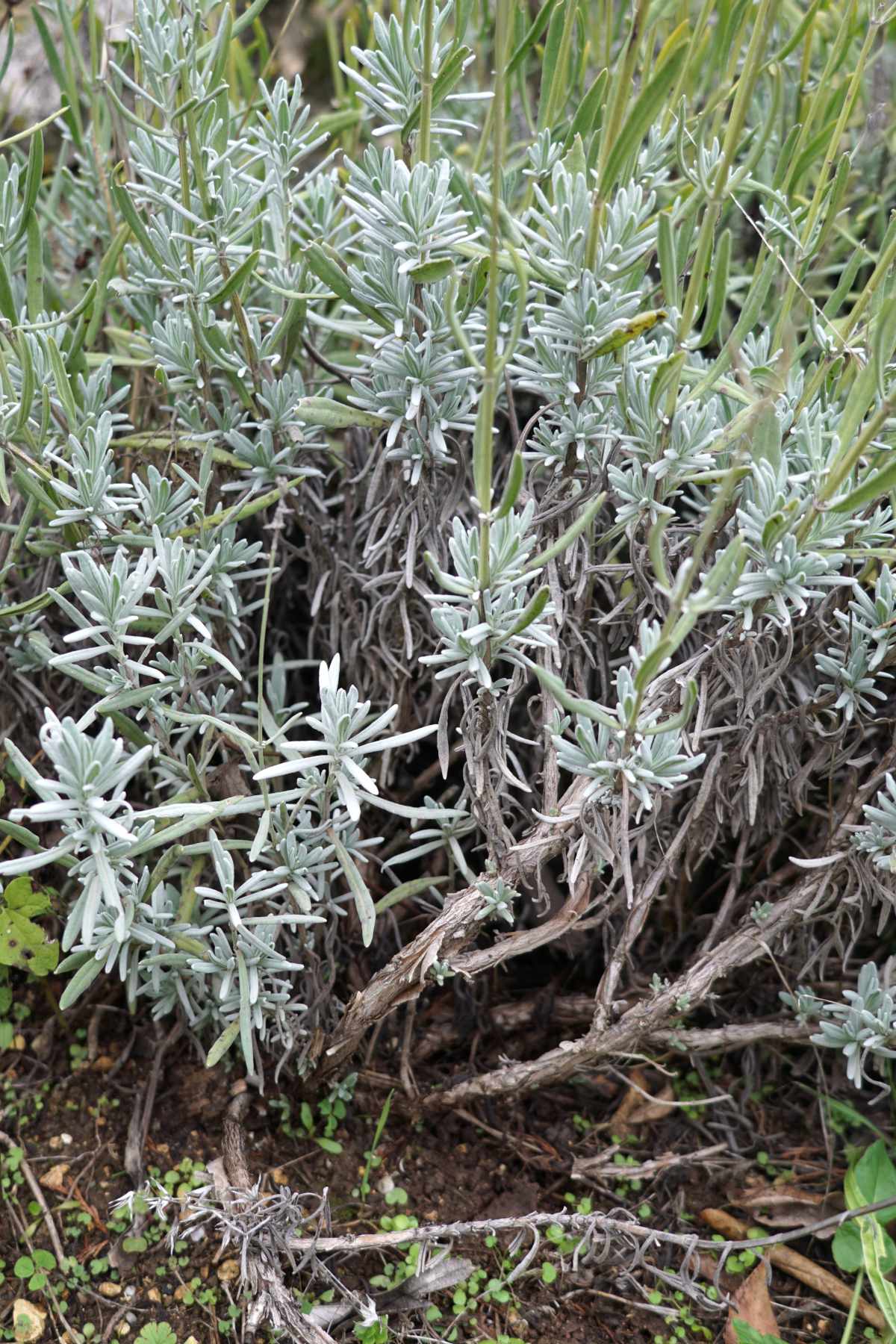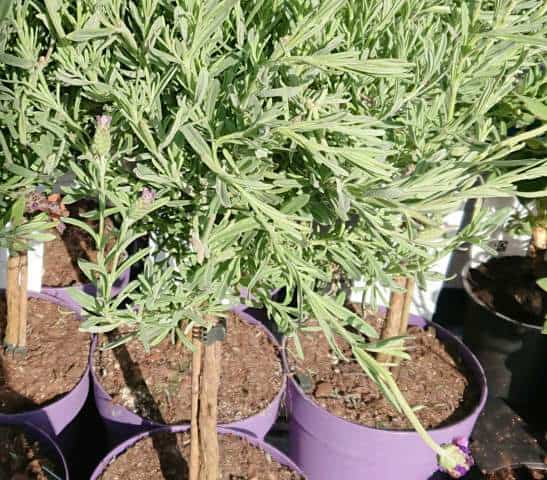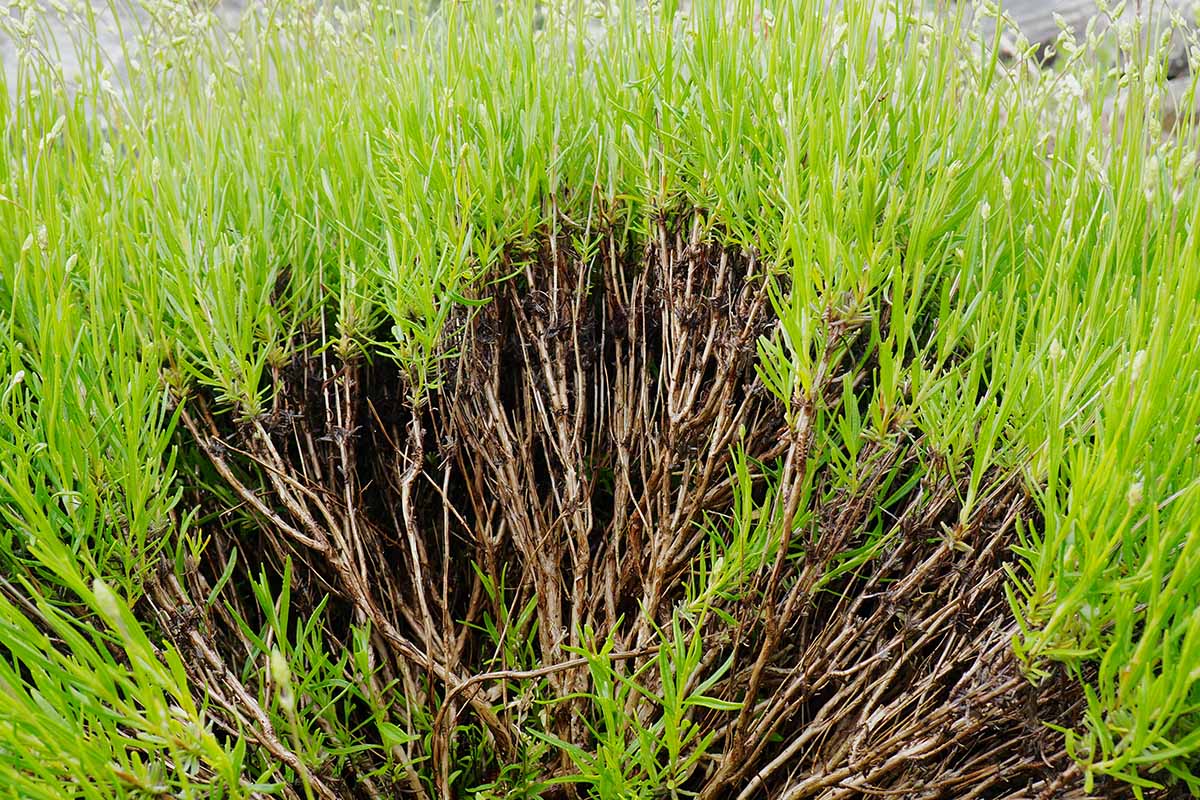The reason your lavender is not growing straight is either because your lavender needs an annual hard cut to avoid a lanky appearance or because your soil is too high in nitrogen, which causes lavender stems to flop over rather than grow straight.
Rich soil lavenders have floppy growth, fewer summer blooms, and maybe yellowing leaves, whereas lavenders that need to be pruned frequently have woody growth, which is irregular in shape and can grow sideways rather than straight.
Overwatering, poor soil drainage, insufficient sunlight, and pots without drainage holes are further potential causes of lavender not growing straight.
Discover the cause of your lavender’s crooked growth and how to fix it by reading on.
Table of Contents
Lavenders Require Annual Pruning to Grow Straight
- Keep the lavender’s more appealing mound shape. A spherical shape guarantees that the flower stems develop more uniformly all around the plant and that the lavender is more resistant to weather effects, especially in the winter.
- encourage further blooms Annual trimming encourages the growth of new stems in the spring and summer, when blooms are most prominently displayed.
- prolongs the life of the lavender. Lavender plants can live for up to 15 years with regular pruning.
- keeps the lavender from getting unkempt and woody. Without pruning, lavender grows more lanky, which can make it grow unevenly and have an untidy appearance. The lavender will then grow somewhat sideways rather than straight, producing fewer flowers and a weaker perfume.
Over the course of its life, lavender becomes increasingly woody. Leggy growth, which frequently develops at odd angles and sideways rather than straight, is less effective for presenting fresh flowers.
A thorough annual trimming maintains the new growth developing straight and considerably inhibits the development of wood.
The longer the lavender has gone without pruning, the more likely it is that it will grow with a lanky appearance and the harder it will be to prune well to make it look tidy.
If the lavender is especially woody, I advise either replacing it or propagating it with cuttings. The lavender, though, can probably be spared and continue to grow normally if it hasn’t been cut in a year or two.
Watch this YouTube video to learn how to prune lavender that is too woody.
Nutrient Rich Soil
The stony or sandy soils of the Mediterranean are familiar to lavender plants. Because sand, grit, and stone do not typically hold moisture or nutrients very well, they cause soil fertility to be between low and medium.
Because of their unique adaptation to these very hard conditions, lavender plants thrive in poor soils and produce the greatest flowers and perfume.
There will be too much nitrogen in the soil for lavenders to thrive if you plant them in rich soils that hold a lot of nutrients and water, or perhaps you added manure to the soil combination before planting.
Although the nitrogen encourages vigorous stem and foliage growth, this growth is often weak structurally and flops over, which prevents your lavender from growing as straightly as it should.
The summertime flower display is also diminished due to the increased nitrogen, and the foliage’s perfume is not as potent. Additionally, this growth is more vulnerable to fungi than the lavender would normally be.
The answer is… You will need to either amend the garden soil where the lavender is now planted or move the lavender to a pot, which is a terrific alternative as you have control over the soil profile, in order for it to grow straight and healthily.
To balance the nutrients and replicate the sandy soil conditions of the South of Europe, where lavender is grown commercially, the lavender needs a sand or grit amendment.
Mix around one third horticultural sand or grit and two thirds potting soil or compost for growing lavender in pots.
(Read my post on the ideal soil mixture for lavenders for additional information.)
This will guarantee that the soil for the lavender has the proper structure, low nutrient levels, and good drainage (lavenders prefer dry soils).
If the lavender has been in fertile soil or has received fertilizer for a long period, it won’t recover right away, but it will gradually recover over the following weeks and months and start to grow straight.
I would wait till the fall or the following spring to give it a good prune so it resembles more of a mound shape rather than a straggly plant that grows sideways if there is a lot of soft, sticky growth.
Lavenders don’t need additional fertilizer because they thrive in settings of low to medium soil fertility.
Even commercial growers who want to maximize their production choose to grow their lavender in sandy soil since it results in a higher concentration of lavender oil.
Other Possible Causes
Other potential reasons why lavender doesn’t grow straight include:
- inadequate lighting (lavenders require full sun)
- watering too much
- sluggish drained soil
- pots without a base drainage hole
Full sun is ideal for lavender plants since it promotes more blooms, oils, smell, and robust leaf growth.
For instance, a potted lavender plant in the corner of a patio may not receive enough light, causing it to lean toward the sun during the day instead of growing straight.
The stems should grow straight if you rotate the lavender occasionally so that the growth is not concentrated on one side or, much better, if you relocate the potted lavender to a more open space with more light.
In nations like Italy, France, and Spain with little rainfall and arid temperatures, lavender thrives. Therefore, even in hot weather, they do not need much water, and they really enjoy somewhat dry soil.
(Read my post to find out how frequently to water lavender.)
The soil will be too wet for the lavender to flourish if it is overwatered or planted in soil that drains slowly (like clay). When stressed, lavender plants will droop down in moist soil.
Reduce watering to once every two weeks if the lavender is especially drooping rather than simply growing unevenly to give the soil time to dry out and the roots time to heal.
The lavender is much more vulnerable to fungal diseases, which can cause the leaves to become gray, black, or brown, if the soil is damp for a lengthy period of time.
Make sure the lavender is planted in soil that drains well and water it only when absolutely necessary so that it may recuperate.
Lavenders should be planted in a container with drainage holes in the bottom that is 12 to 16 inches across to allow for water runoff.
As the soil will probably be overly wet, pots with adequate drainage or the use of drip trays underneath the pot have a similar effect as overwatering in that the lavender growth may droop downward.
(Read my post on picking out the ideal pot for lavenders.)
With the proper care and ideal conditions, lavender plants put in the proper pots with sufficient drainage should recover in a few weeks.
FAQ
Why does my lavender look scraggly?
Lavender plants can get overgrown and scraggly and may not bloom as frequently if they are not pruned. Therefore, develop the habit of routinely trimming your plant if you want to prevent this from happening.
Why is my lavender turning woody?
Although lavender plants can live up to 20 years, after six to eight years, they frequently become woody. The main contributing factors to this issue are heavy soil and frequent summer irrigation. Allow plants to dry out in the summer before watering to promote longer life. Plant on a slope or modify the soil in the planting area if your soil is clay.
How do I make my lavender bush bushy?
To encourage new growth, prune lavender back by a third to a half of its height. Lower stems of older plants develop a woody texture. Avoid cutting into the woody base and locate the woody portion of the stem. Go up about 2 inches to make the cut. Trim faded flower stalks back throughout the blooming period to promote recurrent blooming.



